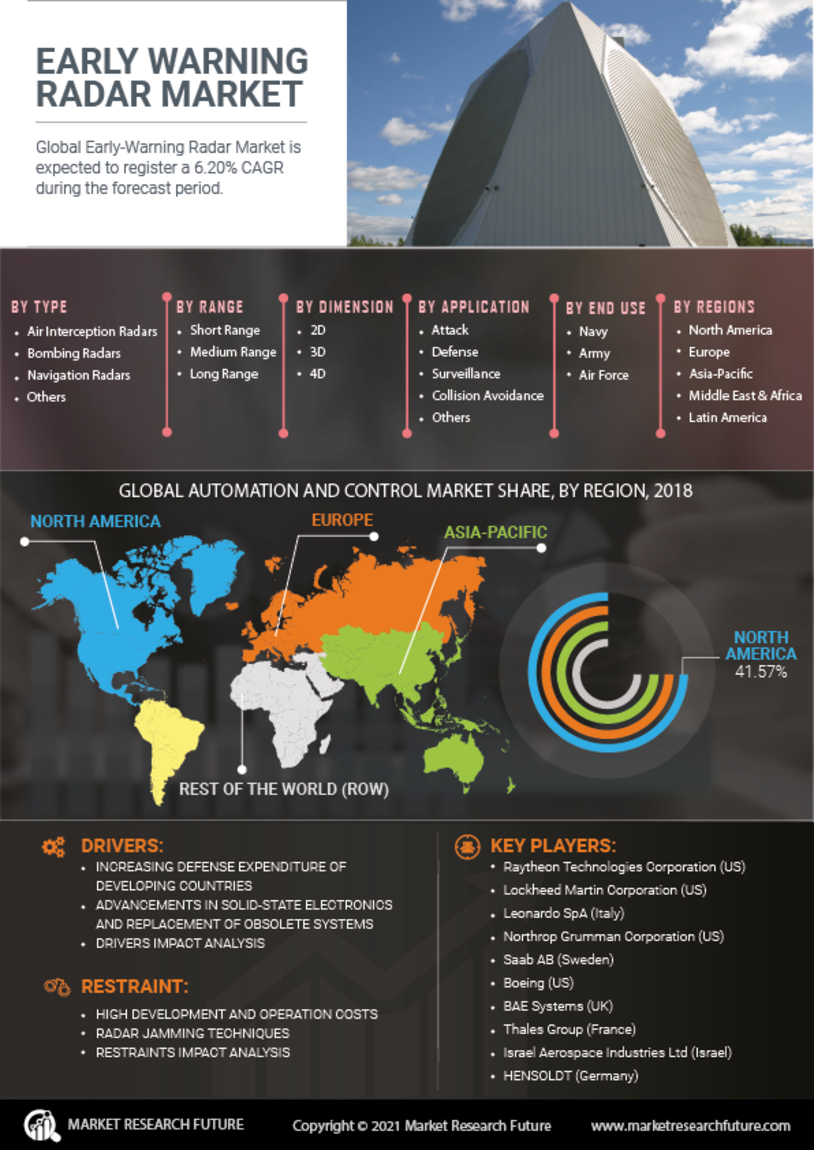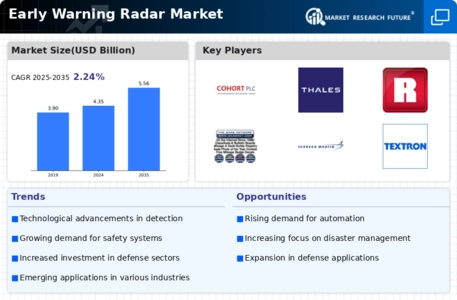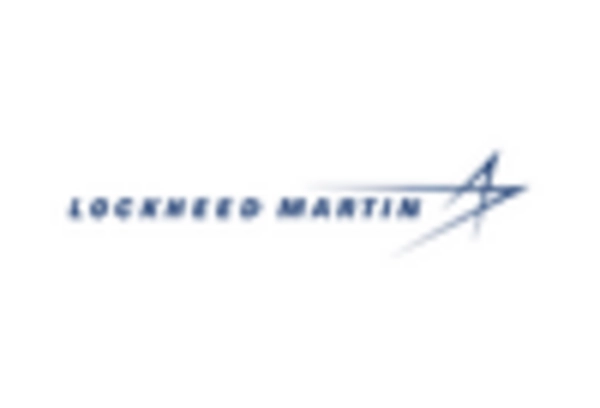Increased Focus on National Security
The Early Warning Radar Market is significantly influenced by the heightened focus on national security across various regions. Governments are increasingly prioritizing the development of robust defense mechanisms to counter potential threats, including missile attacks and natural disasters. This trend is reflected in the rising defense budgets, with many countries allocating substantial resources to enhance their surveillance and reconnaissance capabilities. For instance, the defense spending in several nations has seen an increase of over 10% in recent years, which directly correlates with the demand for advanced early warning radar systems. Consequently, this growing emphasis on national security is expected to drive the Early Warning Radar Market, as nations seek to bolster their defense infrastructures.
Demand for Real-Time Data and Analytics
The Early Warning Radar Market is witnessing a growing demand for real-time data and analytics, which are crucial for timely decision-making in critical situations. Organizations are increasingly recognizing the importance of immediate data access for effective disaster response and military operations. The integration of artificial intelligence and machine learning into radar systems is enhancing data processing capabilities, allowing for quicker analysis and response times. This trend is supported by the increasing number of natural disasters and geopolitical tensions, which necessitate rapid response mechanisms. As a result, the market for early warning radar systems is projected to expand, with an estimated growth rate of 6% annually, driven by the need for real-time data and analytics.
Strategic Partnerships and Collaborations
The Early Warning Radar Market is benefiting from strategic partnerships and collaborations among key stakeholders, including government agencies, defense contractors, and technology providers. These alliances are fostering innovation and facilitating the development of advanced radar systems that meet the evolving needs of various sectors. Collaborative efforts are often aimed at enhancing research and development capabilities, which can lead to the introduction of cutting-edge technologies in the market. For instance, partnerships between defense organizations and tech firms have resulted in the creation of integrated radar solutions that offer improved performance and reliability. This trend is likely to continue, as stakeholders recognize the value of collaboration in driving advancements in the Early Warning Radar Market.
Technological Advancements in Radar Systems
The Early Warning Radar Market is experiencing a surge in technological advancements, particularly in radar signal processing and sensor technologies. Innovations such as phased array radar systems and synthetic aperture radar are enhancing detection capabilities and accuracy. These advancements are likely to improve the operational efficiency of early warning systems, making them more reliable in various applications, including military and disaster management. The market is projected to grow at a compound annual growth rate of approximately 5.2% from 2025 to 2030, driven by these technological improvements. As nations invest in modernizing their defense systems, the demand for advanced radar technologies is expected to rise, further propelling the Early Warning Radar Market.
Rising Environmental Concerns and Disaster Management
The Early Warning Radar Market is also being shaped by rising environmental concerns and the need for effective disaster management systems. With the increasing frequency of extreme weather events, there is a pressing need for advanced radar systems that can provide early warnings for natural disasters such as hurricanes, floods, and wildfires. Governments and organizations are investing in radar technologies that can enhance their predictive capabilities and improve public safety. This trend is evident in the allocation of funds towards disaster preparedness initiatives, which have seen a rise of approximately 15% in recent years. Consequently, the demand for early warning radar systems is expected to grow, as they play a critical role in mitigating the impacts of natural disasters.


















Leave a Comment